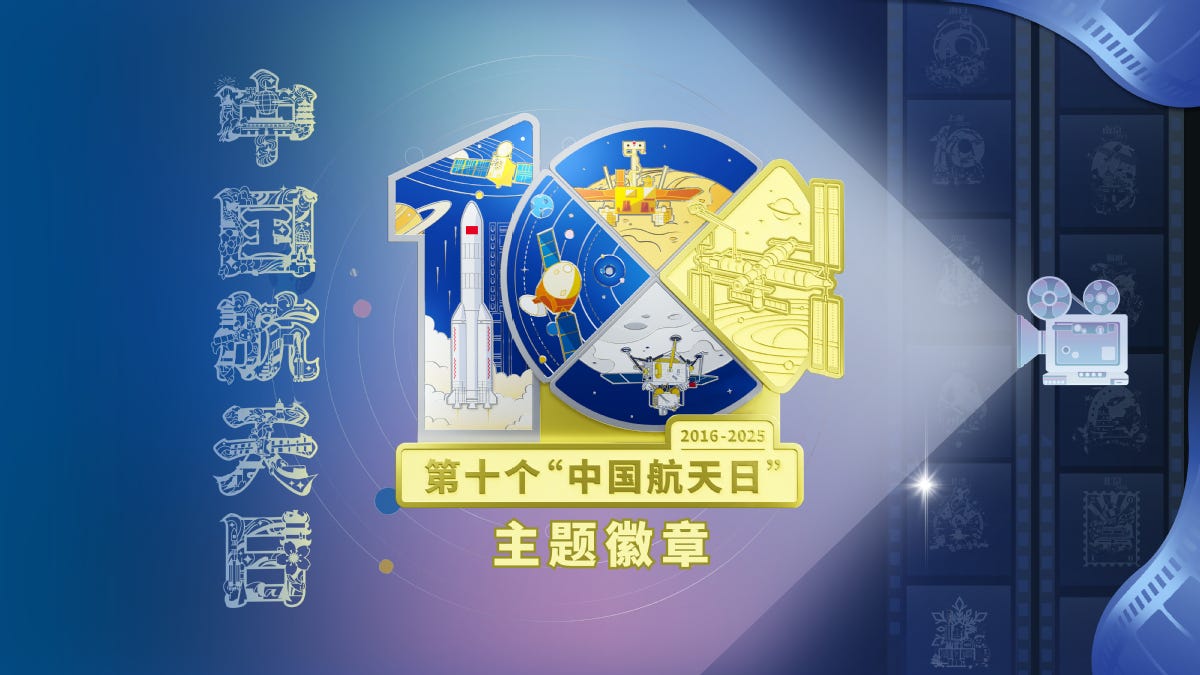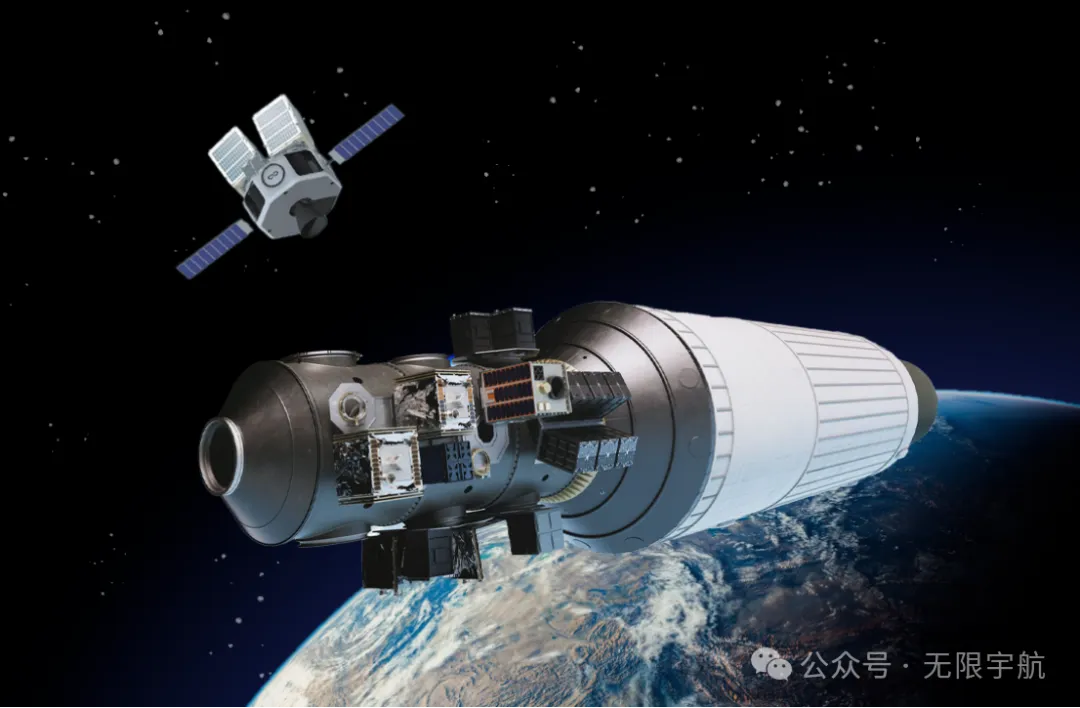Reusable Rockets Pass Tests Ahead of Debuts This Year
Celebrations around the space sector are set to take place this week too.
Ahead of the 10th Space Day later this week, state-owned and private space companies are holding off on their announcements, but progress on reusable rockets, spacecraft, and policy remains. Despite that, some small announcements were made just ahead of the celebrations.
What to expect from China's 10th Space Day
China is set to celebrate its 10th Space Day in Shanghai on April 24th, the same day the country’s first satellite reached orbit in 1970. Exhibitions and events will be held at the Shanghai World Expo Exhibition and Convention Center until May 5th.
Over a week and a half, forty-one countries and international organizations are expected to display exhibits alongside talks from Chinese space officials, academicians, and experts. Across China, hundreds of space-related events are planned across the country to promote space.
CGTN reported on April 17th that the Space Day will have the first scientific results from the Sino-French SVOM mission released alongside an announcement regarding the Chang’e 8 missions selection of international payloads. Various private space enterprises are expected to attend too. The Innovation Academy for Microsatellites of the Chinese Academy of Sciences’ Qingzhou spacecraft is also planned to display a full-sized model of the cargo resupply spacecraft for the first time.
Like last year’s space day, numerous announcements from both the state-owned and private sectors are basically certain.
Additionally, ahead of the event the China National Space Administration unveiled decorative promotional pins.

Regarding China in Space’s coverage of the 10th Space Day, depending on how many announcements are made, and with what’s being announced, I may opt for many small articles to focus on a single company or type of technology. Alternatively, I am considering a single large post about the event.
Shenzhou-20 completes pre-launch rehearsals
The Shenzhou-20 spacecraft, Long March 2F/G Y20 launch vehicle, ground systems, support teams, and mission crew have reportedly performed a launch rehearsal ahead of the actual launch this week. Details on who is onboard are still unknown, as is standard for Chinese crewed missions, but rumors are currently aplenty.
Meanwhile, CCTV’s Tiangong Space Station-focused YouTube channel has been sharing videos of launch preparations and the Shenzhou-19 crew, who are spending their last week onboard the station.
Waiting for the new crew are Shenzhou-19’s Cai Xuzhe (蔡旭哲), Song Lingdong (宋令东), and Wang Haoze(王浩泽). Shenzhou-19’s taikonaut trio has been onboard the station since October 30th 2024, almost six months ago, and is expected to return to Earth before the end of the month.
A launch date has not been announced for the mission, with several days in consideration, but a launch is likely on April 24th. In support of the launch, the Tiangong Space Station has performed maneuvers to adjust its position and orbit to allow the Shenzhou-20 spacecraft to catch up effectively.
Major Chinese broadcaster CGTN has typically livestreamed its English-language launch coverage on its YouTube channel.
Kinetica-2 begins buildup to launch
CAS Space stated on April 16th that its reusable Kinetica-2 launch vehicle is transitioning into its assembly stage this month ahead of the vehicle’s maiden flight in September.
In support of this, vibration tests of internal propellant pipes were completed, verifying that fuels can reach the rocket’s engines during flight without collapsing during high-stress phases of flight. CAS Space added that data showed that the structural stability and air tightness of all the tested pipelines were within design expectations.
Hyperbola-3 performs cryogenic testing
iSpace shared on April 18th that a test tank for its reusable Hyperbola-3 launch vehicles had completed a cryogenic proof test the day prior. For the test, the tank was filled with liquid nitrogen for an extended period of time to allow teams to measure internal pressures and flexing of welds as well as the outer walls.
Hyperbola-3’s propellant tank, being tested, has a diameter of 4.2 meters and a length of around 18 meters, with each section friction stir welded together. In-flight, the propellant tank will hold either liquid methane or liquid oxygen.
Following the test, iSpace stated that the design of Hyperbola-3’s propellant tanks had been fully verified and validated, allowing for the company to move on with its test campaign ahead of a maiden flight in December.
Hyperbola-1 gains new launch infrastructure
In more news from iSpace, Hyperbola-1, a small solid-fuelled launch vehicle, has gained a new transporter-support vehicle following testing on April 17th. In a video shared by the company, the transporter-support vehicle parked next to a launch stand, raised a pathfinder Hyperbola-1 rocket onto the stand, before moving away and later coming back to take the vehicle off of the stand.
iSpace added that with the new vehicle, Hyperbola-1 has partly automated its launch preparations, allowing for a quicker and smoother launch campaign. More flexible launch options are now said to be available too.
Hyperbola-1 failed on its last flight in July 2024, an anomaly investigation was completed in October. It is unknown when the vehicle will make its return to flight.
Hainan outlines new space policy
The Global Times reported on April 14th that the province of Hainan, home to the two Wenchang launch sites, has put forward new policy to promote the island province as a crucial practice site for the building of new quality productive forces, with a focus on expanding the province's space industry.
According to the Global Times, a new document from the provincial government outlines plans to accelerate the development of commercial space launch capabilities by benchmarking against leading global sites. Along with calling for methodical advancement of the development of key commercial space infrastructure and innovation platforms.
Additionally, the province is directed to establish a commercial measurement, operation, and control system, alongside a platform for rocket recovery and reuse. With the aim to build a reliable and stable framework for commercial space launch missions, enabling low-cost, frequent, secure, and sustainable commercial launches.
Other details reportedly in the document are the establishment of an international satellite advanced manufacturing center and a collaborative satellite-rocket R&D center alongside pushing for a "aerospace-plus" economic model to foster new businesses, such as tourism.
Orbital maneuvering start-up raises funds
InfinAstro (无限宇航), full business name Beijing Infinity Aerospace Technology Co Ltd, shared late last month that it had completed a tens of millions of Yuan angel funding round. According to the company, the funds will be used to realize plans for a spacecraft bus and orbital transfer vehicle.
InfinAstro is aiming to develop a series of orbital transfer vehicles to provide in-space delivery services to orbits between 200 and 36,000 kilometers in altitude. With orbital transfer vehicles, the company expects to provide accurate deployment of a satellite constellation in a single launch, further reducing launch costs for spacecraft operators.
Furthermore, the company expects that with their spacecraft, deployment costs can be reduced by up to sixty-six percent, and the time to orbit can be saved by about eighty-five percent. Following a proving of the spacecraft, InfinAstro plans to offer on-orbit life extensions, as far out as geostationary orbit, and off-orbit re-entry services.
No timeline for a first demonstration mission has been disclosed by InfinAstro, but ground testing of various systems is expected to begin in the coming months.






